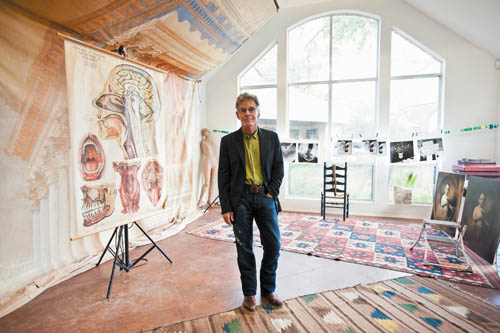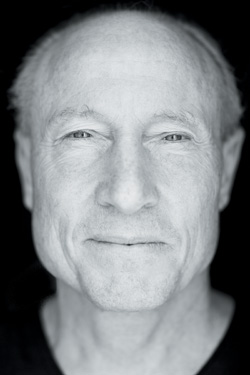12. Be Quiet

Father and son pause during a lull while bodysurfing at Guacamaya Beach in Costa Rica. This image was captured quietly and without an exchange of words.
Canon 5DMii, 50mm lens, f/16, Del Mar Housing
THE INCREMENTS OF TIME have been sliced and diced into smaller and smaller pieces. Life moves like a time-lapsed movie. The day-to-day details are lost and sometimes disappear. We drive to work but don’t really remember what happened between leaving home and pulling into our parking spot. Such speed deadens our senses. Memories blur and moments become fuzzy. We listen but don’t really hear. There is just too much to take in, so we don’t.
For the casual observer, this isn’t ideal. For the photographer, this is a dangerous state and contrary to who we are.
We like to look at pictures of people who are present and engaged. It slows us down. It draws us in. Even more, quiet pictures reflect how our memory captures events. We remember the iconic still moments, those moments where time becomes quiet and is momentarily frozen. Creating pictures like this is an extremely difficult task, not because of the person being photographed but because of you.
To create people pictures that are still and serene, we have to model and embody the tone or mood we want to capture. Sound simple? It’s much easier said than done. Interacting with people is a mixture of excitement, nervousness, anxiety, hope, and connection. We are easily swept away by it all.
It’s almost like giving in to the temptation to read a really good book too fast. Drawn in by the plot, characters, and story we want to skim and skip ahead. Yet, such speed would only lessen the value. We would miss the nuances, subtle expressions, and intriguing use of words. We would find out what happens, only to have missed the main point.
In my own experience, when I have rushed a photo shoot the picture taking was exciting. Afterward, the resulting photographs made my stomach ache. When I have taken the time to be quiet and to slow down, reviewing the final photographs was a process full of delight; each photograph was a surprise! Silence, slow pace, and patience are worth the extra effort. There is a greater chance for the pictures to speak with their own words.
What You Do with the Time
What does it mean to be quiet and to slow down? Is this really possible? Making people pictures requires you to think on your feet and react to light, expression, composition, movement, and tone. With people, sometimes you have 3 minutes, other times 30 minutes. Is it about having more time? No. It’s about what you do with the time that you have. And that’s true with life as well, isn’t it? Regardless of how much we wish it weren’t so, there are never more minutes in a day. Living life, and taking pictures, is about making the most of each minute that we have.
Perhaps it is about approaching a situation with a bit of serenity? Or even better, becoming a more stress-free and observant person. Taking good pictures is not only about your gear and subject, it’s about you. Becoming a good photographer is about becoming someone who is different than the crowd. Develop a calm and quiet disposition, a peace of mind that isn’t dependent on situations or circumstances, and your photographs will speak volumes.

The first few portraits I made of fine art photographer Keith Carter in his studio were rushed and didn’t turn out so well. Realizing my mistake, I took a deep breath and slowed down. With simple and quiet words, I provided direction to Keith on where to stand and then pushed the shutter release just a few times.
Canon 5DMii, 16–35 mm lens, f/2.8
Exercise: Silent Pictures
For some this exercise is going to be one of the most difficult within this book. Yet perhaps it will be one of the more rewarding—making portraits without speaking or using words. Doing this exercise will help you to become a more observant photographer. And ultimately this will lead to new ways of thinking and seeing, which in turn will lead to creating much more powerful pictures. The basic requirements are to take a deep breath, slow down, and make pictures without exchanging any words. By exaggerating things a bit, you will learn even more.
Step 1 Planning
Set up a 30-minute photo shoot with a subject of your choice. Before you meet up, explain the overall vision, flow, and details (as described below) for the shoot.
Step 2 Photo Shoot, Part 1—Conversation
For the first 10 minutes of the shoot, meet your subject and talk with him with a calm demeanor. Explain that you are doing this shoot as an assignment to grow as a photographer and ask for his help in this process. Share your vision by articulating what type of images you want to create; something that is silent and strong. Explain that you don’t want the pictures to be theatrical or contrived—the goal is authenticity. Talk about the flow of the shoot—10 minutes conversing, 20 minutes shooting, and 10 minutes reflecting back on the shoot. Explain that during the 20-minute shoot it will be completely silent, that the goal will be to be patient, quiet, and still. The communication will be nonverbal with gestures and you will only be taking ten pictures.
Tips
Ask your subject for help in learning to be a better photographer. Make the photo shoot a collaboration between you and the subject.
Remember, there is value in the process regardless of whether the pictures make it into your portfolio or not. The goal is growth.
During the shoot, you may be tempted to fill the “quiet void” with words. Resist that urge and stay committed to silence.
Step 3 Photo Shoot, Part 2—Silent Pictures
For the next 20 minutes, be patient and quiet as you work. Aim to create 10 strong portraits.
Step 4 Photo Shoot, Part 3—Conversation
After the 20 minutes have passed, graciously thank the subject for participating in this project. Ask him or her about the experience, what worked, and what didn’t. Ask the subject for advice on how you could nonverbally communicate even better.
Exercise Details
Goal: Create 10 portraits. Tools: Camera, lens (preferably between 50mm–100mm). Light: Natural or available light. Location: Indoors or outdoors. Themes: Silence and strength. Duration: 40 minutes.
Step 5 Reflections
Take 10 minutes to jot down your own reflections about the exercise. Write down both the positive and negative. Write about what you learned. Next, outline a few action steps that you can take the next time you are photographing a person. Finally, whether or not the exercise was a success, consider doing it a second time with another person to grow even further.

LEFT Employing the techniques described in this exercise, helped this subject become more engaged. After waiting in silence, I made two frames.
Canon 5DMii, 85mm lens, f/2
OPPOSITE Kelly Slater is a ten-time world champion surfer, who leads an exciting and busy life. His voice mail box and schedule are always full. Yet I wasn’t interested in capturing the bustle and excitement of surf stardom and fame. I was looking for a more authentic moment where Slater was quiet and engaged.
Canon 5DMii, 50mm lens, f/1.2
“In a portrait, I’m looking for the silence in somebody.”
—Henri Cartier-Bresson

